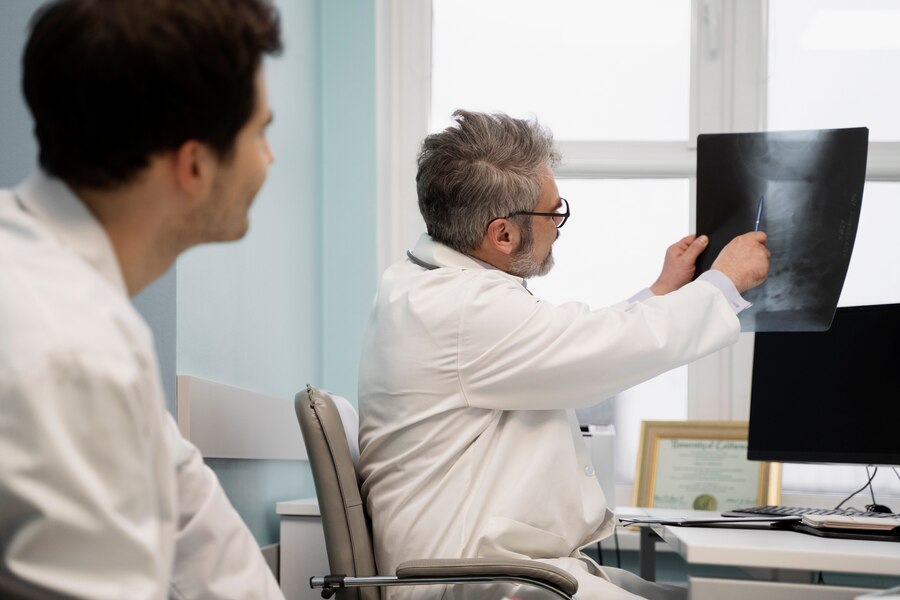Spinal pain is a common condition that affects millions of people worldwide. Whether caused by an injury, degenerative conditions, or poor posture, spinal pain can significantly impact your daily life and overall well-being. Fortunately, orthopedic care offers a variety of effective treatments that can help manage and alleviate back pain. In this article, we will explore the most common spinal pain treatments, the importance of seeing an orthopedic specialist, and how you can find the right solutions for your back pain.
1. Understanding Spinal Pain
The spine is a complex structure consisting of vertebrae, discs, muscles, ligaments, and nerves. Spinal pain can arise from many sources, including:
- Herniated or Bulging Discs: When a disc in the spine slips out of place or ruptures, it can press on nearby nerves, causing pain.
- Degenerative Disc Disease: As we age, the discs in the spine can wear down, leading to pain, stiffness, and limited mobility.
- Scoliosis or Spinal Curvature: Abnormal curvatures of the spine can lead to discomfort and pain.
- Muscle Strains or Sprains: Overexertion, lifting heavy objects, or sudden movements can strain the muscles surrounding the spine, causing acute pain.
- Osteoarthritis: Degeneration of the joints in the spine can result in inflammation and chronic pain.
Given the variety of potential causes, spinal pain treatment requires a tailored approach that addresses the root cause of the discomfort.
2. Orthopedic Care for Spinal Pain
Orthopedic specialists focus on diagnosing and treating musculoskeletal issues, including spine-related problems. If you’re experiencing chronic or severe back pain, it’s essential to seek orthopedic care to receive a proper diagnosis and comprehensive treatment plan.
An orthopedic assessment typically involves:
- Physical Exam: The orthopedic specialist will assess your posture, range of motion, and areas of tenderness in your back.
- Imaging Tests: X-rays, MRIs, or CT scans can be used to visualize the spine and identify issues such as disc herniation, spinal stenosis, or fractures.
Once the cause of the spinal pain is identified, your orthopedic specialist will recommend the best treatment options for your condition.
3. Non-Surgical Spinal Pain Treatments
In many cases, spinal pain can be effectively managed without the need for surgery. Non-surgical treatments focus on reducing pain, improving mobility, and preventing further injury. Some of the most common non-surgical spinal pain treatments include:
A. Physical Therapy
Physical therapy, physiotherapy is one of the most effective non-surgical treatments for back pain. A physical therapist or orthopedist will design a customized exercise program to strengthen the muscles supporting the spine, improve flexibility, and correct posture. The goal of physical therapy is to reduce pain and prevent future injury by targeting the root cause of the discomfort.
- Strengthening exercises help stabilize the spine and relieve pressure on discs and joints.
- Stretching exercises improve flexibility and alleviate stiffness.
- Postural correction techniques help reduce strain on the spine during daily activities.
B. Pain Management Techniques
Managing pain is a key aspect of spinal pain treatment. Depending on the severity of your pain, your orthopedic doctor may recommend a variety of options, including:
- Medications: Over-the-counter pain relievers such as ibuprofen or acetaminophen can help alleviate mild to moderate back pain. For more severe pain, prescription medications such as muscle relaxants or opioids may be recommended for short-term use.
- Steroid Injections: For inflammation-related spinal pain, corticosteroid injections can provide significant pain relief by targeting the affected area directly.
C. Chiropractic Care
Chiropractors specialize in spinal alignment and manipulation. Chiropractic adjustments can help relieve pressure on nerves, improve spinal alignment, and reduce pain. Many patients find chiropractic care to be an effective complementary treatment for managing spinal pain.
D. Heat and Cold Therapy
Applying heat or cold to the affected area can provide temporary relief for spinal pain. Heat therapy helps relax muscles and increase blood flow, while cold therapy reduces inflammation and numbs the pain. Alternating between heat and cold can provide additional comfort and reduce swelling.
4. Surgical Treatments for Spinal Pain
In some cases, surgery may be necessary if non-surgical treatments do not provide sufficient relief or if the condition is severe. Some common surgical treatments for spinal pain include:
- Discectomy: This surgery involves removing part of a herniated disc that is pressing on nerves and causing pain.
- Spinal Fusion: If a disc or vertebra is severely damaged, spinal fusion surgery may be performed to fuse two vertebrae together, stabilizing the spine and reducing pain.
- Laminectomy: This surgery involves removing part of the vertebra (the lamina) to relieve pressure on the spinal cord or nerves, which is often necessary for conditions like spinal stenosis.
Surgical treatments are typically considered only when conservative methods have failed or when the pain is significantly impairing daily activities.
5. Lifestyle Changes for Long-Term Spine Health
In addition to medical treatments, making lifestyle changes can help manage spinal pain and prevent future issues. Here are some tips for maintaining a healthy spine:
- Maintain a Healthy Weight: Excess weight puts additional strain on the spine, increasing the risk of pain and injury.
- Exercise Regularly: Regular low-impact exercise, such as walking or swimming, can help keep the muscles supporting the spine strong and flexible.
- Practice Proper Posture: Pay attention to your posture, especially when sitting, standing, or lifting. Good posture helps distribute weight evenly across the spine and reduces strain on the joints.
- Avoid Smoking: Smoking can decrease blood flow to the spine, hindering healing and contributing to disc degeneration.
Spinal pain is a common issue that can be caused by a variety of factors, from injury to degenerative conditions. Fortunately, orthopedic care offers effective treatments, both non-surgical and surgical, to manage pain and improve quality of life. By working closely with an orthopedic specialist, you can develop a treatment plan that addresses the root cause of your pain and helps you regain mobility. Whether you choose physical therapy, pain management techniques, or, in some cases, surgery, there are many solutions available to help you live a pain-free life. If you’re experiencing back pain, don’t wait—consult an orthopedic specialist to find the best treatment for you. In homes for elderly in Sofia there are specialists who help old people.





